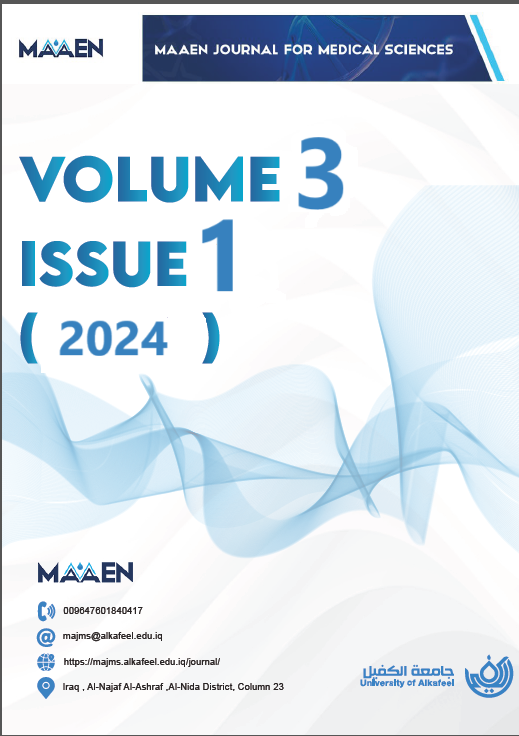Abstract
To obtain the full article please click the below URL or copy the URL and paste it in your browser
(https://majms.alkafeel.edu.iq/journal/vol3/iss1/2/)
Background: Pharmacovigilance is the science and activities that used to detect, evaluate, understand, and prevent
drugs\' adverse effects and to ensure that medicines are used safely and effectively. Antimicrobials considered as an
important curable medicine for diseases; however, irrational medical prescribing may lead to differing types of adverse
drug reactions (ADRs)
Aim of study: The study aims to summarize besides analyzing data from the pharmacovigilance center in Basrah
concerning antibiotic use-related ADR.
Method: This study is a retrospective cohort study of antibiotic used in 2022e2023. The study population consists of
patients who received antibiotics during the study period. The outcome of interest is the incidence of antibiotic associated adverse events.
Results: Penicillin and third-generation cephalosporin were the most frequent causes of ADRs, and both were account
for 29.00 % of the reported cases followed by glycopeptide, and vancomycin about 24.00 %. The most common clinical
manifestations were skin and subcutaneous tissue disorders, occurred in 80 cases (75.00 %), after which difficulty in
breathing (8.50 %) and with remaining (16.00 %) miscellaneous symptoms like hypotension, urticaria, headache, and GIT
disorders were come.
Conclusion: Penicillin and third-generation cephalosporin were the most frequent causes of ADRs, skin manifestations
were the most frequently reported adverse events. Inappropriate antibiotic prescriptions were common and associated
with increased risks of adverse drug events and higher attributable healthcare expenditure and increase need for education programs for rational use of antibiotics.
(https://majms.alkafeel.edu.iq/journal/vol3/iss1/2/)
Background: Pharmacovigilance is the science and activities that used to detect, evaluate, understand, and prevent
drugs\' adverse effects and to ensure that medicines are used safely and effectively. Antimicrobials considered as an
important curable medicine for diseases; however, irrational medical prescribing may lead to differing types of adverse
drug reactions (ADRs)
Aim of study: The study aims to summarize besides analyzing data from the pharmacovigilance center in Basrah
concerning antibiotic use-related ADR.
Method: This study is a retrospective cohort study of antibiotic used in 2022e2023. The study population consists of
patients who received antibiotics during the study period. The outcome of interest is the incidence of antibiotic associated adverse events.
Results: Penicillin and third-generation cephalosporin were the most frequent causes of ADRs, and both were account
for 29.00 % of the reported cases followed by glycopeptide, and vancomycin about 24.00 %. The most common clinical
manifestations were skin and subcutaneous tissue disorders, occurred in 80 cases (75.00 %), after which difficulty in
breathing (8.50 %) and with remaining (16.00 %) miscellaneous symptoms like hypotension, urticaria, headache, and GIT
disorders were come.
Conclusion: Penicillin and third-generation cephalosporin were the most frequent causes of ADRs, skin manifestations
were the most frequently reported adverse events. Inappropriate antibiotic prescriptions were common and associated
with increased risks of adverse drug events and higher attributable healthcare expenditure and increase need for education programs for rational use of antibiotics.
